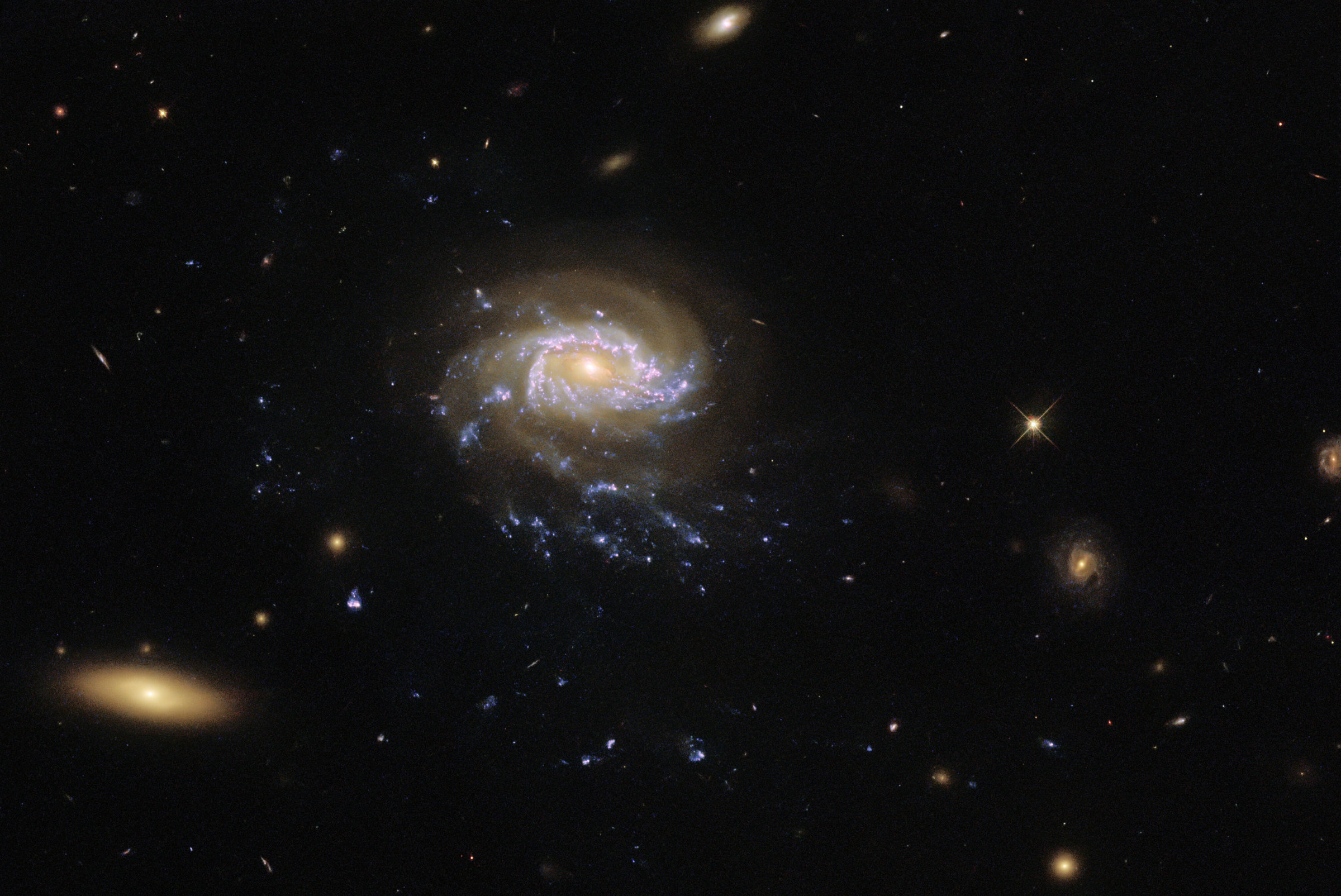Hubble Captured A Gorgeous Image Of A Galactic Seascape
NASA's Hubble space telescope has captured a mesmerizing image of what the space agency calls a "galactic seascape." The seascape in question is a jellyfish galaxy, thus named because of the visible blue tendrils sprouting from the galaxy's core. This particular galaxy, shown in the image below, is known as JO201.
The galaxy lies deep within the constellation Cetus, which is also named after a sea creature from Greek Mythology. As such, the themed naming of the galaxy type and the constellation it calls home only help illustrate just how nautically themed JO201 really is.
This new Hubble image of the galactic seascape was taken as part of the space telescope's observations of the size, masses, and ages of clumps of star formation seen in the tendrils of the galaxy. The hope is that by observing these types of galaxies more in-depth, scientists can understand the connection between what NASA calls ram-pressure stripping and the formation of stars.

The image was made possible thanks to the Wide Field Camera 3 situated on Hubble. This instrument allows astronomers to peer deep into the universe by capturing ultraviolet, infrared, and visible wavelengths.
NASA has relied on the Wide Field Camera 3 to capture some of Hubble's most iconic images in the past. And it continues to show its usefulness in this latest image of the jellyfish galaxy JO201.
With the Wide Field Camera still showing so much promise, it shouldn't be much of a surprise that NASA is looking to extend Hubble's mission as much as possible. When combined with the data of the James Webb space telescope, astronomers can gather more in-depth data about our universe and the very foundations pushing it forward. As such, this image of a galactic seascape is more than just a pretty picture.
